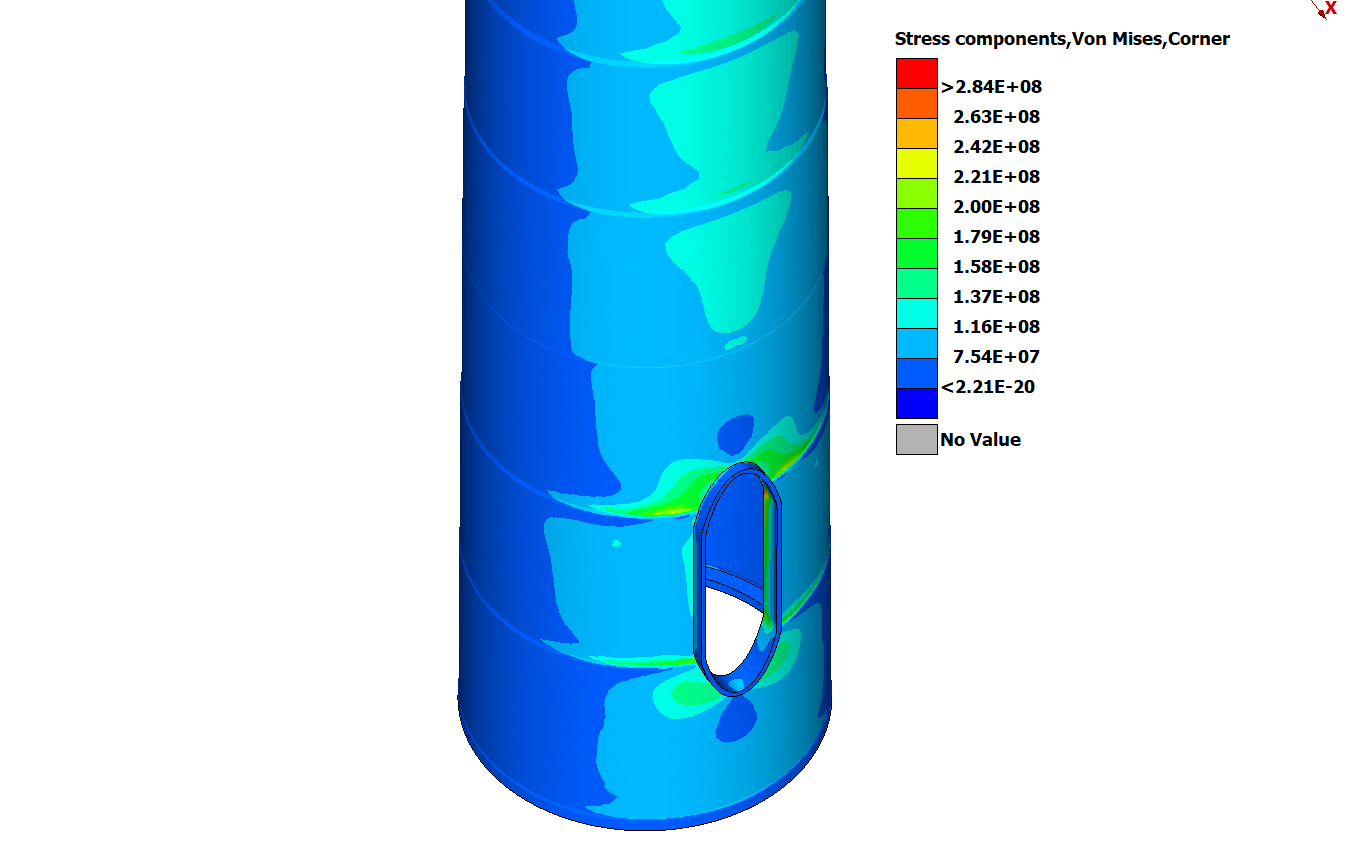Design, optimisation and certification of turbine components
Timeline
2007-2023Sector
Structural mechanicsScope
Structural calculation of wind turbine componentsBACKGROUND
Wind turbine components must be structurally analysed to verify their integrity and survival to the predicted operating history. The analysis methodology requires an advanced level of mathematical modelling and a high degree of detail to provide valid results. SOLUTE performs these analyses, ensuring the structural life of the wind turbine components, from the blade to the foundation structure.
The wind industry is continually designing and developing new machines in the quest for greater energy and economic efficiency to drive growth in the share of this type of energy. It is of vital importance in the development of a new wind turbine to ensure its structural integrity, both whole and of each of its parts and mechanical joints, as it is a rotating machine subjected to loads of considerable magnitude. The certification process before accredited entities to which each new machine must be submitted ensures that this is the case and establishes precise guidelines for the analysis prior to the execution of the experimentation with prototypes to verify the results.
RESULTS
CAE tasks performed during the development phase allow to adopt, in a very dynamic way, design or conceptual alternatives in case of unsatisfactory results, or on the other hand the cost optimisation of the parts that already achieve the expected structural performance. In addition, FEM models allow to know beyond the ultimate result of the structural objectives, contributing to a general understanding of the structural behaviour, the role of each part in the whole structure, the knowledge of the load path and its distribution, as well as the sensitivity to changes. In short, to a better and deeper knowledge of the machine, its structures and components as a solid basis for making decisions that effectively guide the development phase.
EXPERIENCE
SOLUTE frequently collaborates and is directly involved with the leading OEMs (Original Equipment Manufacturers) in the international market on new developments. It also works with wind farm owners who, without owning the technology, wish to access the knowledge of structural behaviour in order to manage O&M and life extension actions.
The FEM models must be fed by the mechanical loads for the various scenarios contemplated by the standard and which are previously obtained by calculation with aeroelastic models of the wind turbine.
METHODOLOGY
The analysis is carried out using CAE (computer aided calculation) tools using the Finite Element Method (FEM) and complemented with analytical calculations. To carry out these calculations, commercial FEM codes (ANSYS, OPTISTRUCT, PAMCRASH) are used, over which, even with differences due to their origin, the standards of good practice in modelling, the criteria of expert analysts and the basis of extensive experience prevail.
Models of different magnitude must be created depending on the structural role played by the component under analysis: the scale varies from very large global models, containing the entire Nacelle and even the tower, but with less discretisation for computational economy, to detailed sub-models for sections of a part that allow greater precision of the value and location.
The FEM models must be fed by the mechanical loads for the various scenarios contemplated by the standard, and which are previously obtained by calculation with aeroelastic models of the wind turbine. The FEM calculations make it possible to extract the stress state for extreme and fatigue cases, with the aim of ensuring not only survival in the face of such extreme events, but also what is even more important: ensuring the structural fatigue life of each component and joint for the expected duration. This is possible due to the deterministic nature of the calculation of mechanical loads, which provides information on the evolution over time.
Thus, the fatigue post-processing combines the stress state with its historical variation to contrast it with the material properties and determine by means of Miner's rule the accumulated damage in the considered time interval.
The models usually include advanced aspects such as the non-linearity in load transmission due to the frictional contacts present (bearings, bolted joints), and the preload or assembly pretension of high-capacity bolted joints (bushing to blade, bushing to shaft, yaw system, etc.). This analysis rigorously follows exhaustive procedures with high standards required by the certification bodies (DNV-GL, TÜV) for the certification of the new machine. This ensures the reliability and accuracy of the results, which is a sign of the rigour of the method and process. In the structural analysis process, in addition to the specific wind power standards (IEC-61400), structural analysis standards (VDI-2230, Eurocode 3), and specific guides from the certifying bodies (DNVGL-ST-0361...) are applied.
Eólica
Predicción energética y meteorológica para operadores renovables
Servicio de predicción meteorológica y energética a través del entrenamiento de algoritmos de inteligencia artificial.
Automoción
Optimización topológica
Capacidad que surge ante la necesidad de diseñar componentes que mejoren las prestaciones de los vehículos
